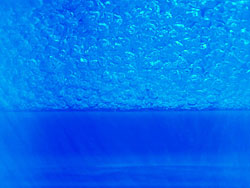Adding just the right dash of nanoparticles to standard mixes of lubricants and refrigerants could yield the equivalent of an energy-saving chill pill according to researchers at the US National Institute of Standards and Technology (NIST).
Experiments with varying concentrations of nanoparticle additives indicate they may well be able to improve the energy efficiency of large industrial, commercial, and institutional cooling systems known as chillers.
Specifically, NIST researcher Mark Kedzierski found that dispersing 'sufficient' amounts of copper oxide particles (30nm in diameter) in a common polyester lubricant and combining it with a refrigerant such as R134a improves heat transfer by between 50 per cent and 275 per cent.
But just how adding nanomaterials to lubricants improves the dynamics of heat transfer in refrigerant/lubricant mixtures is not thoroughly understood. And the process is far from foolproof. Kedzierski explained: 'In fact, an insufficient amount or the wrong type of particles might lead to degradation in performance.'
On the basis of work so far, Kedzierski belives that several factors are likely to account for the improvements he has seen in heat-transfer performance. For one, nanoparticles of materials with high thermal conductivity improve the heat transfer rate of the system.
Preliminary results of the NIST research also indicate that, in sufficient concentrations, nanomaterials enhance heat transfer by encouraging a more vigorous boiling of the mixture. The tiny particles stimulate, in effect, double bubbles - secondary bubbles that form atop bubbles initiated at a boiling site.
Bubbles carry heat away from the surface, and the fact that they are being formed more efficiently because of the nanoparticles means the heat gets transferred more readily.
Success in optimising recipes of refrigerants, lubricants and nanoparticle additives would pay immediate and long-term dividends. If they did not harm other aspects of equipment performance, high-performance mixtures could be swapped into existing chillers, resulting in immediate energy savings. And, because of improved energy efficiency, next-generation equipment would be smaller, requiring fewer raw materials to make.

Nanoparticle additives to lubricants commonly combined with refrigerants used in chillers may encourage secondary nucleation - bubbles on top of bubbles. The double-bubble effect enhances boiling heat transfer and, ultimately, could help to boost the energy efficiency of industrial-sized cooling systems




Fuel cell-based system converts atmospheric CO2 into usable electric current
In any event, splitting water into hydrogen and oxygen requires energy, so in this process it is the potential chemical energy of sodium metal that...